The Salton Sea is a unique body of water located in the heart of the California desert. It is a saline-dense lake that sits within the Salton Basin. The Salton Sea was formed roughly 118 years ago when the Colorado River came through an irrigation system, flooding the Salton Basin.
The region around this landlocked body of water is full of rich history. Popular tourist attractions such as the Anza-Borrego Desert State Park and Coachella Valley surround the Salton Sea. Let’s discuss the history of this body of water and what makes it so special.
How Was the Salton Sea Created?

Roughly one million people visit this California hotspot each year.
©Josh Cornish/Shutterstock.com
Although the exact date the Salton Sea was formed isn’t known, it is believed to happen sometime between 1905 and 1907. A region of Yuma, AZ, had poor irrigation, leading to the Colorado River breaking through the surface.
The flow from the river continued for over a year.
People and animals had to flee and the railway system was shut down. In 1907 protective levees were put in place to stop the filling of water. Runoff from the surrounding area maintains the water levels for the majority of the year.
Size of the Salton Sea

The size of this body of water changes drastically with the weather, particularly during the rainy season.
©Thomas Barrat/Shutterstock.com
By the time the flow of water was stopped, what we now know as the Salton Sea was 40 miles long, 13 miles wide, and covered roughly 400 square miles. Interestingly enough, portions have grown over the years.
At times, the Salton Sea can be 35 miles long by 15 miles wide. Other times, it is 40 miles long by 20 miles wide. The deepest portion of the Salton Sea is 51 feet deep.
What Makes the Salton Sea Unique?

The most photographed location of the Salton Sea is this swing where visitors snap selfies.
©iStock.com/James Griffiths Photography
One of the most obvious things that stands out about the Salton Sea is the fact that it is not on a coast. When you think of salt water, you likely picture the ocean. This is an endorheic lake. Endorheic bodies of water get absorbed into the ground or evaporate.
This causes a shockingly high salinity level within the water. As the salinity continues to rise in the Salton Sea, it is more than 50% saltier than the Pacific Ocean. The Salton Sea also has low levels of oxygen and a lot of algae, causing risks to wildlife.
Wildlife Around the Salton Sea
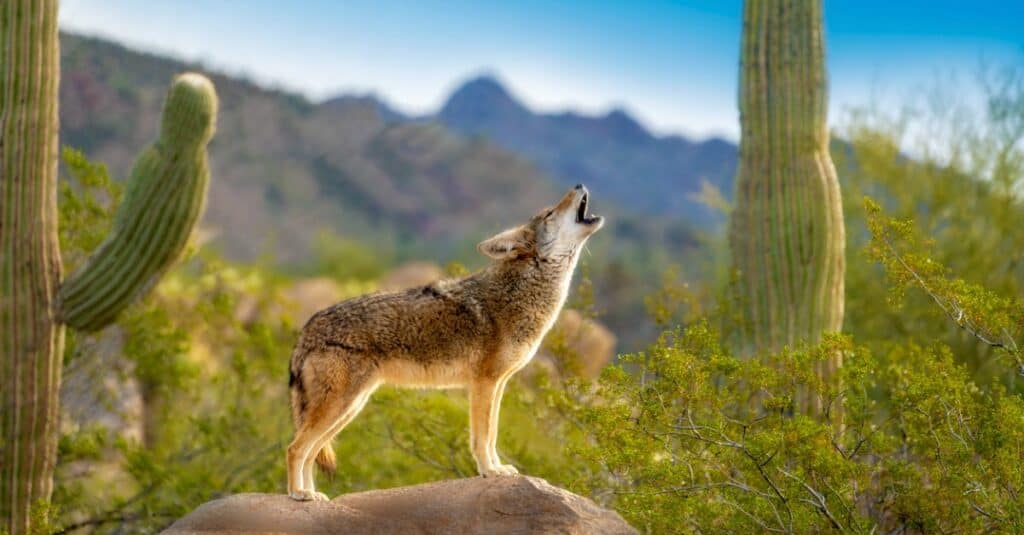
There are about 500,000 coyotes throughout the state of California.
©JayPierstorff/Shutterstock.com
The Salton Sea is home to the Sonny Bono Salton Sea National Wildlife Refuge, which helps wildlife in the area thrive in the unique environment. The refuge was established in 1930 and is home to a wide variety of animals.
Mammals
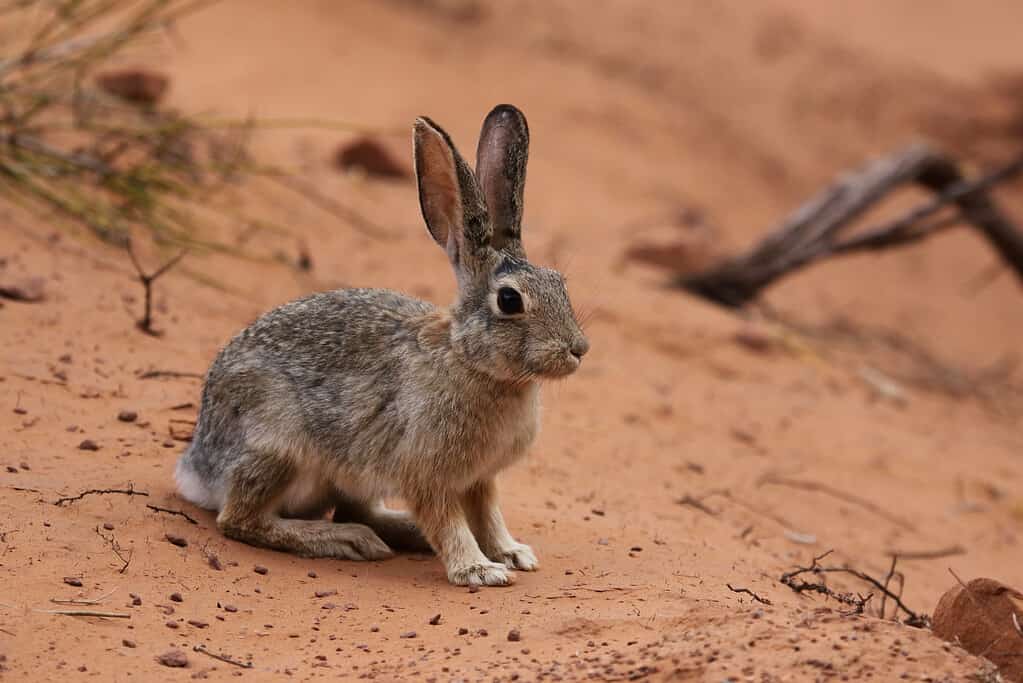
Desert cottontails are incredibly adaptable to their environment.
©Chris Hill/Shutterstock.com
Some of the most common mammals you’ll see at the Sonny Bono Salton Sea National Wildlife Refuge are the following.
- Desert cottontail
- Muskrat
- Racoon
- Bobcat
- Coyote
- Bats
There are also gophers, skunks, squirrels, and mice running around the area.
Birds
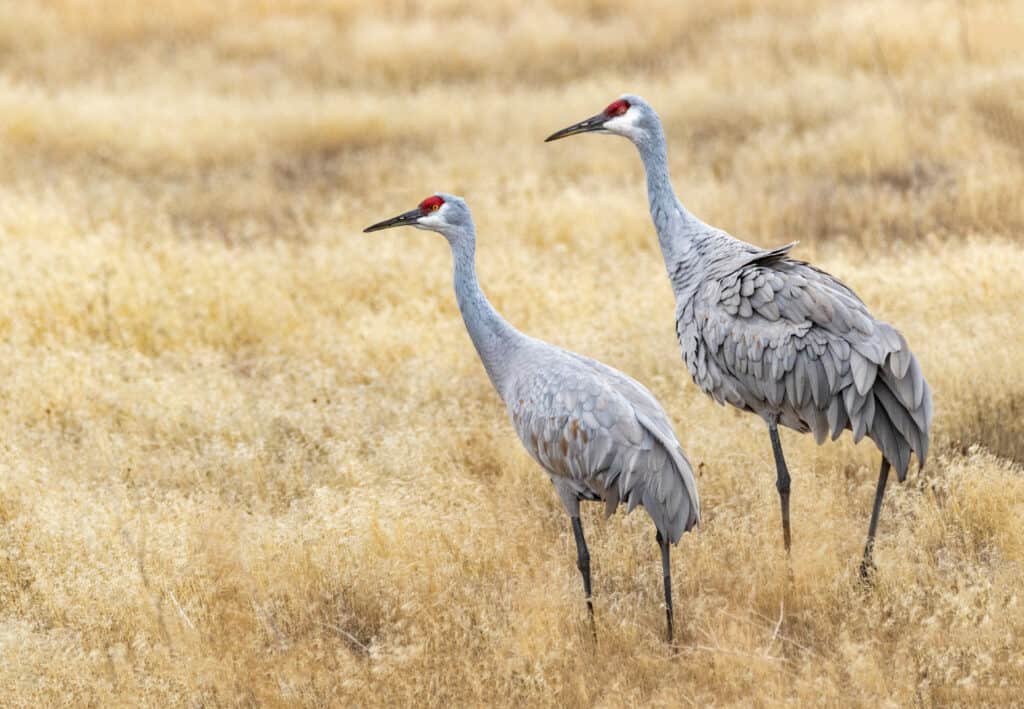
Sandhill cranes are in California in September.
©Michael Chatt/Shutterstock.com
Do you know there are more than 124,000 shorebirds around the Salton Sea? It is one of the most essential habitats for these animals in the region. Here are some of the most common birds to see at Salton Sea.
- Western sandpipers
- Dowitcher species
- Whimbrel
- Willet
- Black-necked stilt
There are also seasonal birds that soar through the sky here.
- Brown pelican
- Black skimmer
- Ruddy duck
- Northern shoveler
- Snow goose
- Burrowing owl
- Marsh wren
Because there are hundreds more species of birds on the refuge, it’s a great location to do some birding in California.
Reptiles

Western diamondbacks are venomous snakes in the California desert.
©Gary Mc Alea Photography/Shutterstock.com
The California desert is home to a wide variety of reptiles. Some you may spot around the Salton Sea are as follows.
- Western diamondback rattlesnake
- Desert spiny lizard
- Common kingsnake
- Whiptail lizard
- Spiny soft-shell turtle
- Coachwhip
Fish
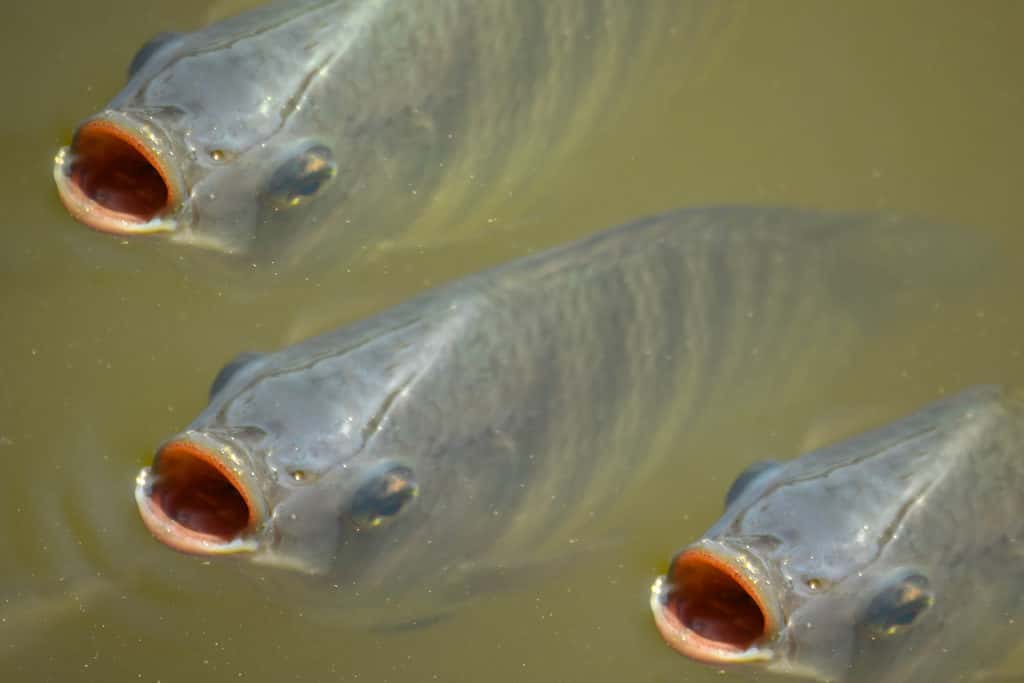
There are over 100 different species of tilapia.
©neenawat khenyothaa/Shutterstock.com
The fish within this high-salinity body of water have changed drastically over the years. At first, it had populations of striped mullet, desert pupfish, rainbow trout, and humpback suckers. It didn’t take long for these fish to die off due to the water’s salinity.
Other types of fish, including silver salmon and striped bass, were introduced to the water but couldn’t take the environment. Thankfully, orange mouth Corvina thrives in the salty water. At one point there were over 100 million tilapia within this landlocked sea as well.
Amphibians
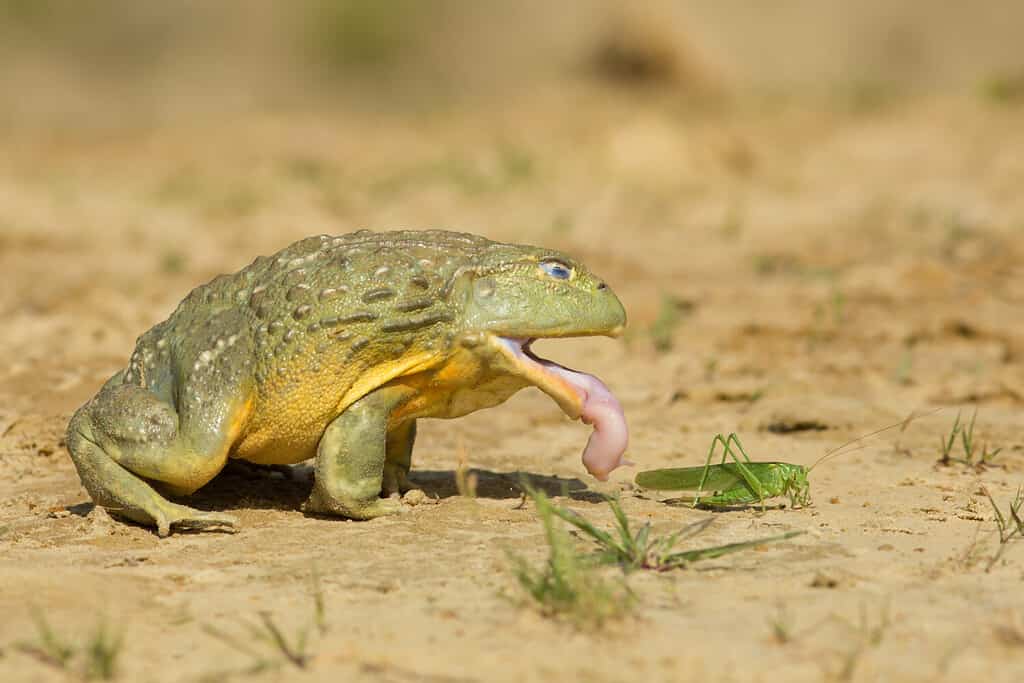
African bullfrogs can weigh over six ounces.
©Milan Zygmunt/Shutterstock.com
There aren’t a lot of amphibians in and around the Salton Sea due to the environment. Some that locals see over and over again are below.
- Bullfrog
- Red-spotted toad
- Lowland leopard frog
- Woodhouse’s toad
Exploring the Salton Sea State Recreation Area
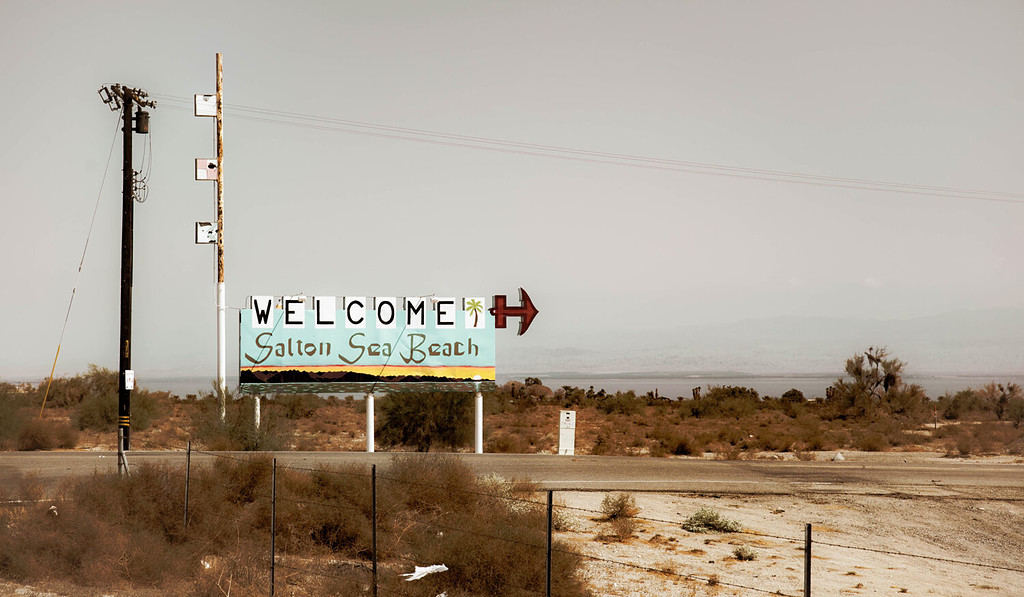
The closest large cities by the Salton Sea are Palm Springs, Coachella, and San Diego.
©Tilted Hat Productions/Shutterstock.com
The California State Park Service operates the Salton Sea State Recreation area. This space was dedicated in 1955 and is near Bombay Beach. With more than 100,000 visitors annually, the Salton Sea State Recreation Area is an outdoor lover’s paradise.
There are 1,400 campsites to choose from and plenty of picnic areas to enjoy lunch in the great outdoors. Many people visit to go boating, paddling, and sailboarding. Anglers can’t get enough of Varner Harbor.
Here you’ll find a fishing jetty that makes it easy to catch tilapia. Many fishermen in the area state that they can catch over 100 fish in a single day. It is important to mention that when water levels are low, the Varner Harbor closes.
The photo featured at the top of this post is © bonandbon/Shutterstock.com
Thank you for reading! Have some feedback for us? Contact the AZ Animals editorial team.







